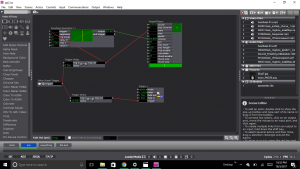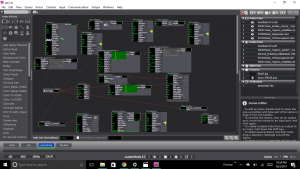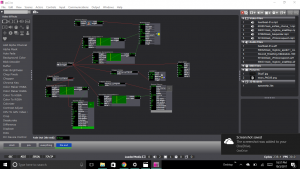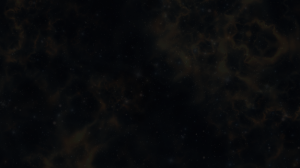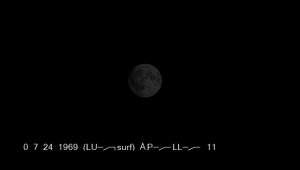Pressure Project 2: We Choose the Moon
Posted: October 3, 2017 Filed under: Zach Stewart Leave a comment »In the second pressure project we were asked to create an experience documenting a significant cultural event or story using audio as our primary medium. The story I chose to tell was the story of the Apollo 11 moon landing and the events that led up to its occurrence from the perspective of the astronaut. This historical event is one of my favorites because it is an amazing story ofhuman ingenuity, drive, and creativity. Also when picking this event, I was thinking of the resources I had in hand. Knowing I would be presenting in the Motion Lab, picking a story about a lunar space journey made since because the experience would automatically become very experiential because the room is so dark. In addition to the audio, I added in several suggestive visuals to guide the journey and create a more immersive experience.
The system consisted of 4 scenes. The first scene was merely a trigger that activated the rest of the system when you would press the space bar. The second scene was merely a black scene with JFK’s famous “We Choose the Moon” speech. The third scene is where the visuals start to kick in. The scene opens to a very light “nebula” glsl shader, which misread, could also be interpreted as smoke from the rocket launch. In over top of the shader is another image of stars that is linked to a pulse generator that flickers on and off along with the sound of a beating heart. Overtop of the heart audio is sound of the launch (the test, the countdown, followed by the noise of the fuel being burned upon takeoff). During the entire audio sequence, the heartbeat sound and the star image flash gets steadily faster to dramatize the events. In the fourth scene, once everything from the previous scene has stopped and a nervous exhale of breath is played. An image of the moon starts fading in and growing bigger on the screen. We then hear Neil Armstrong say one of the most iconic quotes in the history of the human race. After that, the system cycles back to the beginning. Other than the first scene, the entire system is free of user input. The system only relies on enter scene triggers and trigger delays to coordinate the occurrence of events.
Reflecting back on my presentation I was very quick to notice all of its flaws. I felt had clunky my transitions between my audio and visuals and my audio and visuals never exactly matched up how I wanted them too. All of this was almost completely unnoticed by my classmates though. When I brought up the topic for discussion after I presented they said that it was hardly noticeable. Though I know that these flaws exist, my paranoia was maybe uncalled for.
Discussion also led to how to make this system an interactive one. Though my system was deliberately not, I found the ideas interesting and worthy of an introduction in the next iteration of this system if there was one. One of the ideas was to make it controllable though buttons. The user could decide when (or if) to launch, control the speed of the system, or the audio. It was also brought up that I might try to use a stethoscope to control the heartbeat audio of my system.
One last reflection on my system, is the use of silence. Because the experience was limited to 1 minute, I was pressured to put as much audio and visuals into that time period as I could so that the story would be legible. Benny brought up the point of space being devoid of sound. Speaking toward the fourth scene, where we move toward the moon, he suggested it might benefit from the dramatic silence, and I agree. The silence would throw the attention towards the image and highlight the gravity of the experience. If only there was more time!
